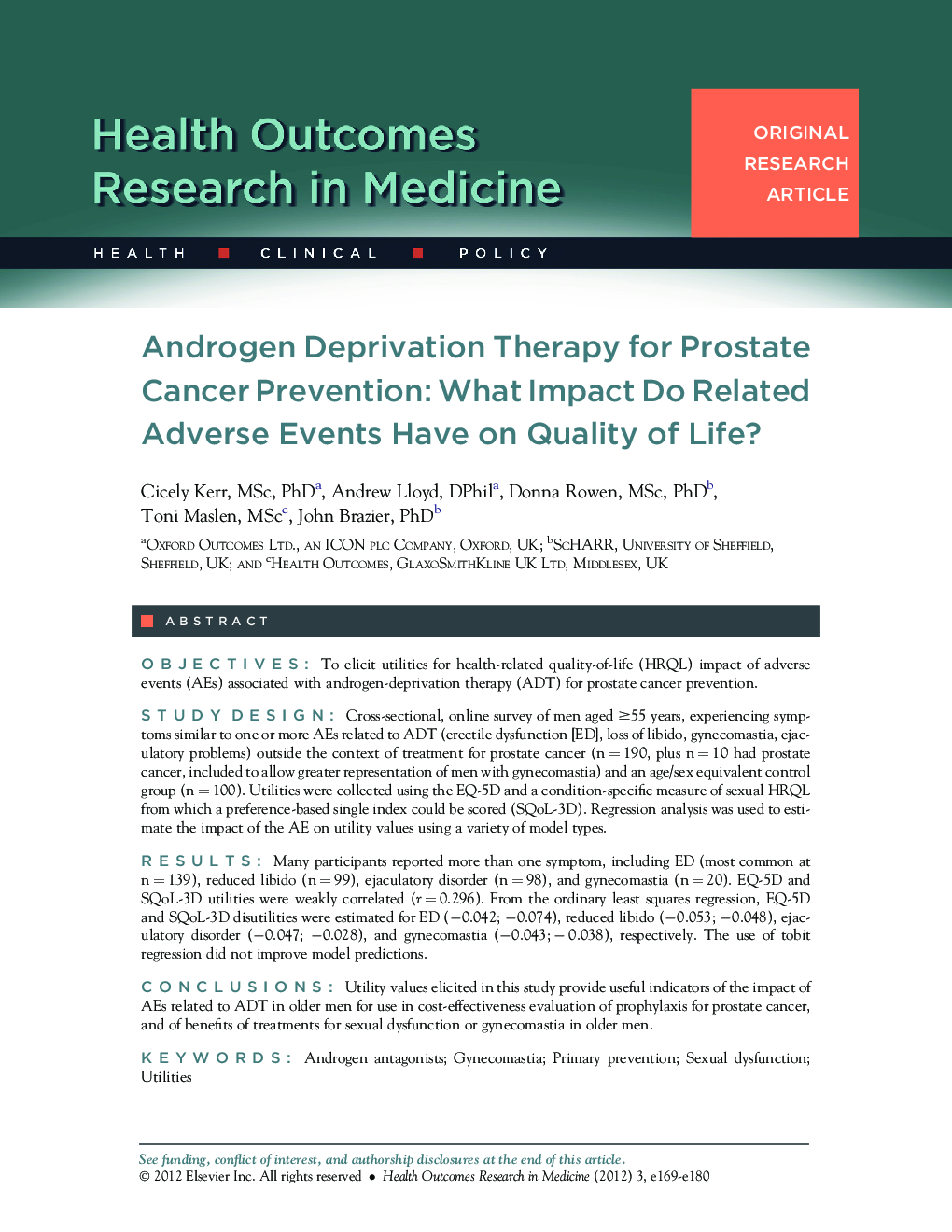| Article ID | Journal | Published Year | Pages | File Type |
|---|---|---|---|---|
| 1074823 | Health Outcomes Research in Medicine | 2012 | 12 Pages |
ObjectivesTo elicit utilities for health-related quality-of-life (HRQL) impact of adverse events (AEs) associated with androgen-deprivation therapy (ADT) for prostate cancer prevention.Study DesignCross-sectional, online survey of men aged ≥55 years, experiencing symptoms similar to one or more AEs related to ADT (erectile dysfunction [ED], loss of libido, gynecomastia, ejaculatory problems) outside the context of treatment for prostate cancer (n = 190, plus n = 10 had prostate cancer, included to allow greater representation of men with gynecomastia) and an age/sex equivalent control group (n = 100). Utilities were collected using the EQ-5D and a condition-specific measure of sexual HRQL from which a preference-based single index could be scored (SQoL-3D). Regression analysis was used to estimate the impact of the AE on utility values using a variety of model types.ResultsMany participants reported more than one symptom, including ED (most common at n = 139), reduced libido (n = 99), ejaculatory disorder (n = 98), and gynecomastia (n = 20). EQ-5D and SQoL-3D utilities were weakly correlated (r = 0.296). From the ordinary least squares regression, EQ-5D and SQoL-3D disutilities were estimated for ED (−0.042; −0.074), reduced libido (−0.053; −0.048), ejaculatory disorder (−0.047; −0.028), and gynecomastia (−0.043; − 0.038), respectively. The use of tobit regression did not improve model predictions.ConclusionsUtility values elicited in this study provide useful indicators of the impact of AEs related to ADT in older men for use in cost-effectiveness evaluation of prophylaxis for prostate cancer, and of benefits of treatments for sexual dysfunction or gynecomastia in older men.
